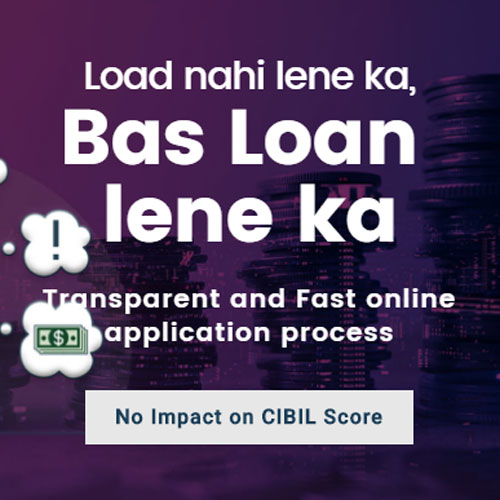
Home Loan
A home loan or lodging advance is a sum obtained by people for a settled residency from money related foundations to purchase, build, repair or revamp a private property. Moneylenders charge an enthusiasm on the sum obtained, which must be paid by the borrowers alongside the essential sum.
Home loan or lodging advance is a standout amongst the most well-known items offered by banks and NBFCs to clients. Home advance is additionally the biggest offering keeping money item and the one that guarantees the longest managing an account associated with the loan specialist. Owning your very own home is, for the most part, an undeniable and also a noteworthy choice in a man’s life. Be that as it may, the cost of development or buy of a property is very high and this is the place home advances play a noteworthy, relatively imperative part for dominant part of home purchasers. Home or lodging credits are propels made to borrowers who expect assets to buy houses/pads/arrive. They can likewise be profited of for development, expansion and redesign of houses. Loan specialists can be managing an account or non-keeping money budgetary organizations.
Latest Updates on Housing Loan Interest Rate
Home Loan Interest Rates to Remain the Same as RBI put Rate Cuts on Hold [Updated: Dec 06, 2017]
In the fifth bi-monthly policy review of the fiscal year of the Monetary Policy Committee (MPC), the committee members decided to keep the repo rate unchanged at 6%. Though one member of the committee was of the view that the policy rate has to be deducted by 25 basis points, it did not materialize. This is expected to have a direct impact on home loan interest rates, keeping the rates unchanged.
Experts believe that the central bank did not go for a rate cut as it expects the US Federal Reserve to hike its interest rates in its December 12-13 policy review. In the meeting, the apex bank also maintained its projection for FY18 real GVA growth stating that it was balanced.
The bank in a statement informed that they expect inflation to hover in the range of 4.3 – 4.7 percent in December and March quarters. It also maintained that there is a case of fiscal slippage considering the implementation of farm waiver loans in some states, rollback of excise duty and VAT and other factors.
RBI Retains Repo Rate At 6%, Cuts SLR to 19.5%
On Wednesday, the Reserve bank of India kept its key lending rate or repo rate unaltered at 6%. Nevertheless, they had also made clear that the implications of GST had worsened the economy’s prospects in the short term. The repo rate is the rate at which the RBI lends to other banks.
- The Reserve Bank of India had however cut the Statutory Liquidity Ratio (SLR) by 50 basis points to 19.50%.
- The SLR is the proportion of deposits a bank is required to maintain in the form of gold, government bonds, etc.
- The decision to keep the repo rates unchanged was grounded on a 5:1 majority in the opinion panel within the Monetary Policy Committee (MPC).
The cut in SLR is done in order to provide more funds for banks to lend to various industries and consumers. More funds would pull down a banks’ costs, depleting their dependence on high fixed deposit return. Lower costs will, in turn, mandate them to reduce interest rates they charge all types of borrowers.
On the flipside, experts were uncertain on the extent that this cycle will play out, taking into consideration that banks, with excess liquidity, are currently holding more than the required 20% of their deposits in government bonds.
Home loan Interest Rates – 03 Apr 2018
| Home Loan Interest Rates from Top Banks as on 03 Apr 2018 | ||
|---|---|---|
| Bank Name | Floating Interest Rate | MCLR Rates |
| SBI | 8.35% – 8.70% | 8.00% |
| Axis Bank | 8.35% – 11.75% * | 8.25% |
| HDFC LTD | 8.35% – 8.60% * | 8.15% |
| ICICI Bank | 8.40% – 8.85% * | 8.20% |
| Bank of Baroda | 8.35% – 9.35% | 8.35% |
| DBS Bank | 8.40% to 8.45% * | 8.20% |
| Bank of India | 8.45% – 8.60% | 8.30% |
| Canara Bank | 8.45% – 8.65% | 8.45% |
| Yes Bank | 9.35% to 10.50% * | 8.80% |
| Indian Overseas Bank | 8.55% to 9.05% | 8.55% |
| Karnataka Bank | 8.60% to 8.90% | 9.20% |
| Oriental Bank | 8.45% to 8.55% * | 8.45% |
| Syndicate Bank | 8.60% | 8.50% |
| Citi Bank | 8.60% to 9.10% | 8.05% |
| Kotak Mahindra Bank | 8.50% | 8.60% |
| Corporation Bank | 8.75% | 8.75% |
| United Bank of India | 8.55% | 8.75% |
| HSBC | 8.65% to 8.75% | 8.05% |
| Federal Bank | 9.59% to 9.84% * | 8.90% |
| Allahabad Bank | 8.75% to 9.25% | 8.45% |
| Central Bank of India | 8.30% | 8.30% |
| UCO Bank | 8.55% to 8.70% | 8.45% |
* Customised Rates Offered Only On Bankbazaar
Factors that Determine Home Loan Rate of Interest
- Prime Lending Rate (PLR): PLR is the point of reference interest rate that banks use to assess interest rates on different products. For instance, the home loan interest rate for a particular bank would be PLR + 0.5%. Assuming the PLR of the bank is 8%, the interest rate for their home loan product would be 8.50%.
- Cash Reserve Ratio (CRR): CRR is the minimum percentage of the total deposits made by the customers that the bank has to hold as reserves. This can either be in the form of cash or as deposits with the RBI. The higher the CRR, the higher the interest rate that a customer pays. This is because the amount of liquidity in the system reduced with an increase in CRR.
- Repo Rate: Repo Rate is the rate of interest at which the Reserve bank of India lends money to other banks. Quite naturally, the leaser the rate at which banks get their loan, the lesser the rate a customer pays. Therefore, lesser the repo rate, lesser the rate of interest for the end customers.
- Reverse Repo Rate: This is the exact opposite of ‘Repo Rate’. This is the rate at which banks lend to the Reserve Bank of India. The banks are very happy to lend to the RBI if the Reverse Repo Rate is high. This means that the bank would gain attractive profits, which may then be passed on to customers in the form of lower interest rates.
- Statutory Liquidity Ratio (SLR): SLR is the reserve required for commercial banks to maintain. SLR can be maintained in the form of gold, government securities, etc. Only after the SLR has been met can a bank offer credit to its customers.
- Benchmark Prime Lending Rate (BPLR): BPLR is the rate at which a bank lends money to its customers. The RBI in place the BPLR as banks often loaned money at extremely low-interest rates. With this in place, no bank can lend below the BPLR. This can visibly affect the interest rate that the bank offers a customer. Higher the BPLR, the higher the interest rate that a customer has to pay.
Types of Home Loans:
Depending upon the type of property being purchased and the quantum of a loan being availed, home loans can be classified into the following different types. In India, banks and NBFCs generally offer home loans under any one of the following listed variants of housing loans.
- Home Purchase Loans As the name itself indicates home purchase loans are specifically given for the purchase of flats or homes. These are the most popular type of home loan and are availed by most home loan borrowers. Almost all banks and Non-Banking Financial Corporations offer home purchase loans.
- Home Loan for Construction Home loan for construction is offered to customers who want cash to construct their own house on an existing piece of land. The catch is that the land for construction should have been brought within a year of availing the loan for the cost of land to be counted as part of this loan. In case the land was bought earlier than one year, then the cost of land is excluded from the loan amount. The formalities for construction loan are slightly different than those for regular home loans. The loan applicant needs to give a lump-sum construction cost estimate to the lending entity and thereafter the lender evaluates and decides to sanction or reject the loan.
- Plot Loans Plot loans are loans offered by banks for purchase of land or plot. These loans are not necessarily offered by all banks or NBFCs.
- Home Extension/Renovation Loans Home loans for extension or renovation of home are offered to those home loan borrowers who already have a house but are looking for further construction or renovation on their existing piece of property. For example, addition of an extra room or renovating a staircase etc.
- Home Conversion LoanIf you have already taken a home loan for purchasing a house, but wish to shift to another house, then you can opt for a home conversion loan. It will help you in transferring the current loan to your new house.
- Balance Transfer Home Loan Individuals can use the balance transfer option to transfer their home loan from one bank to another. Most people choose this option to avail better interest rates.
- NRI Home Loan NRI Home Loans are specially designed for Non-Resident Indians (NRI) who wish to purchase a residential property in India. The requirements and procedure of availing this loan is different from the regular home loans.
- Stamp Duty Loans Stamp Duty Loans are offered by banks to cover the stamp duty charges, which is incurred while purchasing a property.
- Bridged Loans Existing homeowners who want to buy a new house can apply for a Bridged Loan, which will fund the new house. Generally, the tenure of this loan is below 2 years and it requires the borrowers to mortgage the new property with the lender until the loan is repaid.
Features of Home Loan:
Some of the most prominent features of home loans are outlined below.
- Home Loans are secured advances.
- This means that home loans are offered in turn for a security deposited by the loan borrower. Collateral is usually the property that is being funded. Existing property can also be put up as security.
- Interest rates are flexible being either Fixed, Floating or a combination of fixed and floating. The Indian government has come up with the new marginal cost of funds based lending rate or MCLR which is to be used by banks to decide the rate of interest at which they can lend money to a home loan applicant. The earlier base rate used to be the rate based on which banks used to decide their lending rate. MCLR is a more flexible rate which takes into account a lot of factors like funding composition and strategies. MCLR will be reset by banks after every specific interval of time. For example, if a bank decides to reset their MCLR annually then your home loan rate will get reset after every one year.
- Home loan interest rates are lower when compared to unsecured personal advances. Unsecured personal loans have a higher risk ratio associated to them since the bank does not have any security deposit to fall back on in case of a loan default. Hence, these loans are charged a higher rate of interest as compared to home loans which expect the borrower to deposit some kind of collateral as security.
- The advance can be used to fund property for residential or investment purposes.
- Whether you need a house to stay in or for investment purposes, home loan can be availed from a bank of your choice.
- Amounts offered are higher than under other types of loans; up to 85% of the property value.
- Considering the cost of buying property as compared to any other commodity, the loan amount offered and sanctioned is substantial as compared to other types of loans. Hence, the loan tenures offered for home loans are also longer than those for other types of loans.
- Repayments are made in EMIs (Equated Monthly Installments).
- Since, the amounts sanctioned towards home loans are usually huge and the tenure also is long, the repayment of home loans is done in equal monthly installments.
- Pre-payments are allowed, to reduce liability.
- Pre-payment of home loan is allowed by all banks, private and public. Earlier, some banks used to charge pre-payment fees for earlier than stipulated repayment of home loan amount. However, these days most public and private banks let borrowers pay off their home loan as and when convenient. Most banks have stopped charging any pre-payment charges for the same.
- They are long-term in nature; tenors usually vary between 5 – 30 years
- Since the loan quantum for home loans is generally greater than all other types of loans, the repayment period also is longer than that for any other loan type.
- Non-interest charges include processing fees, pre-payment charges, inspection fees, documentation fees etc. Apart from the interest charged on home loan amount, there also are various charges that are levied while the loan sanction process is underway. These charges are communicated to loan applicants at the time of application.
- Co-applicants/joint-applicants are allowed.
- Home loans allow for joint loan applications. Since the loan quantum is high and the tax benefit also is good, banks allow for co-application or joint application of home loans.
- They qualify for tax benefits as per provisions of the IT Act, 1961 and hence, make for a good investment option.
Home Loan Eligibility:
Home loans are secured advances and therefore the eligibility criteria for these loans is laid out differently by different banks. Here are some of the most important factors that feed into determining home loan eligibility criteria for almost all banks in India.
- Age: The minimum age at the time of application should be 21 years. Repayments have to be completed before the age of 60 or 65.
- Employment: Ability to service interest charges, as reflected in the borrower’s earning capacity, is important. Borrowers should:
- Be salaried employees or self-employed persons (professional/non-professional)
- Have been in employment/business for at least 3 years of which current employment should account for at least 1 year.
- Income: A minimum income varying between Rs.5 – 7 lakhs would be required. This depends on the nature of employment i.e. salaried or self-employed.
- Residence: At least one year of stay at the current residence is required to display stability with respect to employment as well as financial. This is an indirect indicator but is taken into account by almost all banks while calculating home loan eligibility.
- Credit Rating: A good credit score is required (a score of 750-900 from CIBIL is considered good). Besides this, a healthy financial background is vital for approval and to determine the interest rate and loan amount.
- Parallel debt channels: While sanctioning home loan to customers, banks also look into the current credit standing of the loan applicant. If a borrower has other home loans, personal loans or car loans in-progress then the lending entity calculates the loan quantum eligibility accordingly. Banks do this to make sure that the loan applicant is able to pay the minimum monthly installment towards his/her home loan.
Documents Required for Home Loan:
Documents to be submitted differ according to the eligibility requirements. The following, however, are commonly requested for from all the applicants:
The application form which has to be signed and affixed with the specified number and size of photographs.
Proof of identity (Copy of Passport/Voter ID/PAN Card/Driving License).
Proof of address (Copy of latest Electricity Bill/Telephone Bill/Property Tax Receipt/Voter ID/Passport).
Last 6 months’ Pass Book/Bank Account Statement.
Business proof in case of non-salaried individuals.
Statement of Personal assets and liabilities.
Identification of signatures from present bankers.
Documents Requested from Guarantors:
- Identity and address proof.
- 2 passport sized photos.
- Proof of business.
- Statement of Personal assets and liabilities.
- Identification of signatures from his/her present bankers.
Additional Documents Requested from Salaried Applicants:
- Salary certificate from the employer (original).
- Copy of ITR or Form 16 for last 2 years.
Additional Documents Requested from Non-Salaried/Self-Employed/Professionals/Other IT Assesses:
- Copy of challans proving that Advance Income Tax has been paid.
- Copy of ITR/Assessment Orders of 3 years.
Fees and Charges Applicable to Home Loans:
Apart from the rate of interest that is charged on home loan products, there are various fees and charges that are applicable to housing finance offered by different banks. These charges may differ in value from one bank to another, however, the types of charges remain the same for almost all banks.
- Processing Fee: Banks generally charge a fee for processing your home loan request. These charges vary with different banks. This fee is non-refundable and is either a specific percentage of the loan amount or a fixed amount of money. There are times when banks are willing to negotiate on the processing charges and lower this fee or waive it off completely depending upon certain terms and conditions.
- Late payment charges: Late payment charges are levied by almost all banks when a loan borrower is late in paying loan installment. There are times when financial crunch or some other financial liability or plain oversight might result in non-payment of home loan installment on time. This results in a late payment fee being levied by the bank.
- Pre-payment charges: Most banks have stopped charging any kind of fee for pre-closure of home loans. However, some banks still charge some percentage of home loan balance as pre-payment charges. This fee is typically levied when any home loan customer repays his/her home loan prior to the stipulated home loan tenure.
- Conversion charges: Typically, home loans are offered by banks either on a fixed interest rate or on a floating rate of interest. The customer does have a choice of switching between these two rates. Every time a customer applies for switching from fixed rate to floating or vice versa, conversion charges are levied by the bank. These charges are some specific percentage of the principal outstanding amount.
- Legal Fee: Legal fee is charged in order to pay the lawyer who does the task of verification of property that is being bought with the loan amount. Most banks do not have in-house lawyers and as such pay fees and recover it from home loan customers.
- Administrative Fee: Some banks charge administrative fee separately from the processing charges. This fee is levied to pay for the administrative cost that the bank incurs for processing of home loan application. Broadly speaking, the administrative fee is levied by banks to compensate for the back-end administrative processes that are performed while processing of home loan applications.
- Statement of account: One copy of home loan statement is provided by the bank free of cost, more than that is chargeable. This fee is generally specific to the bank and hence varies from one bank to another.





